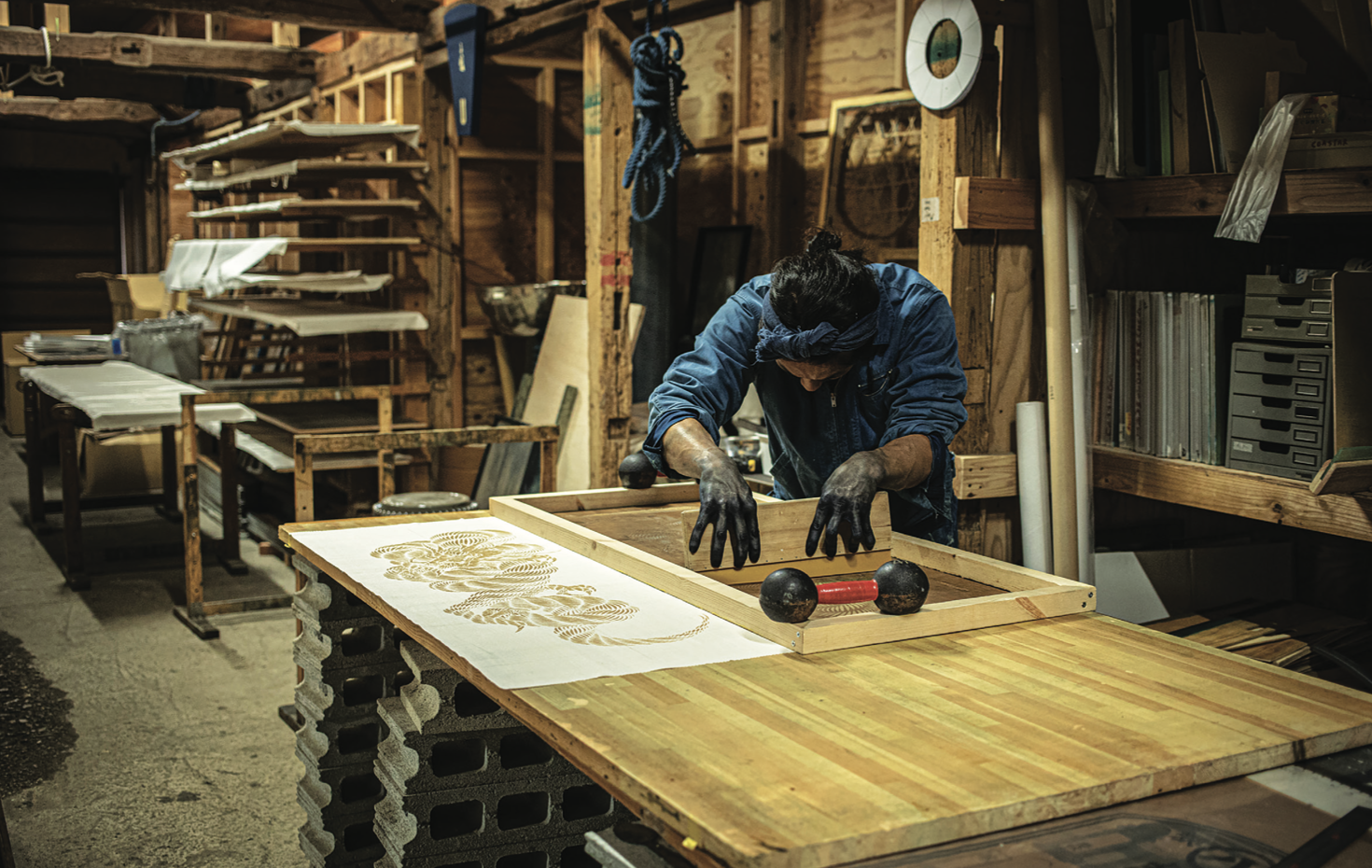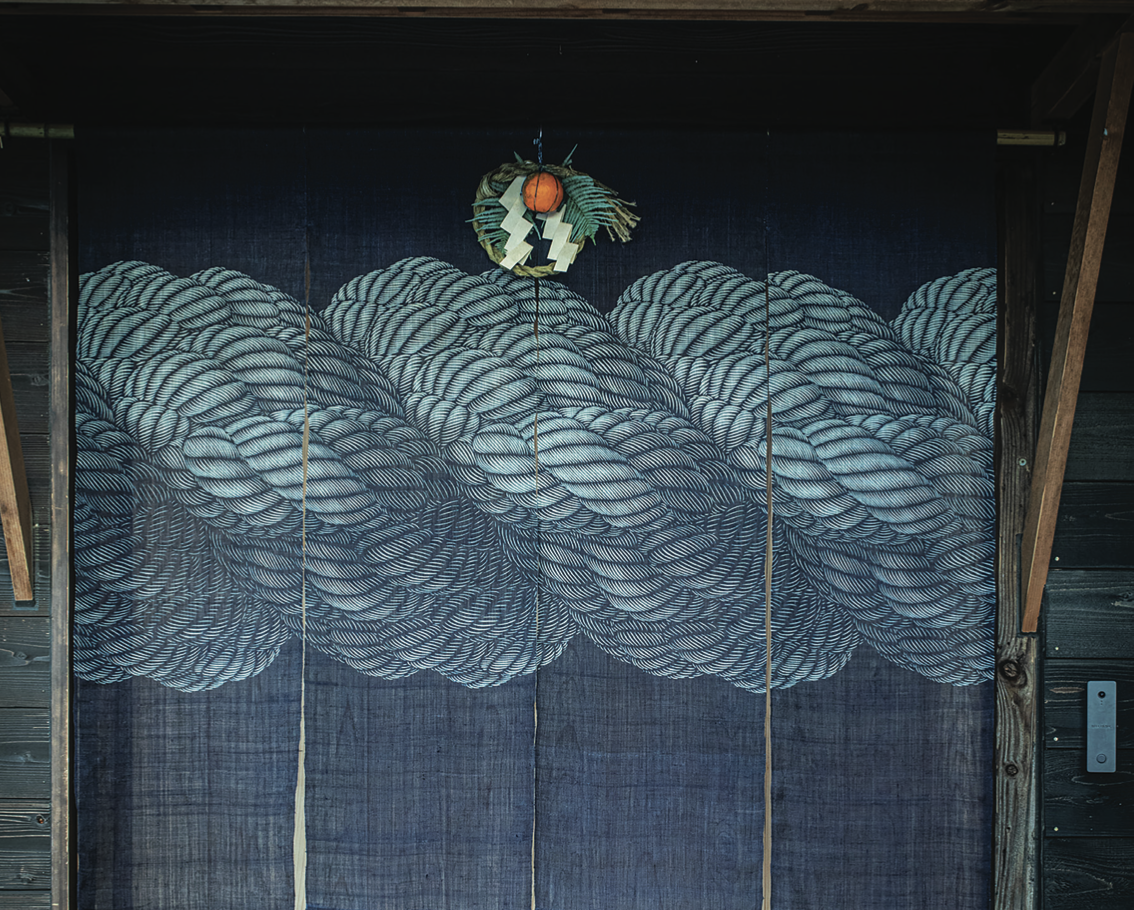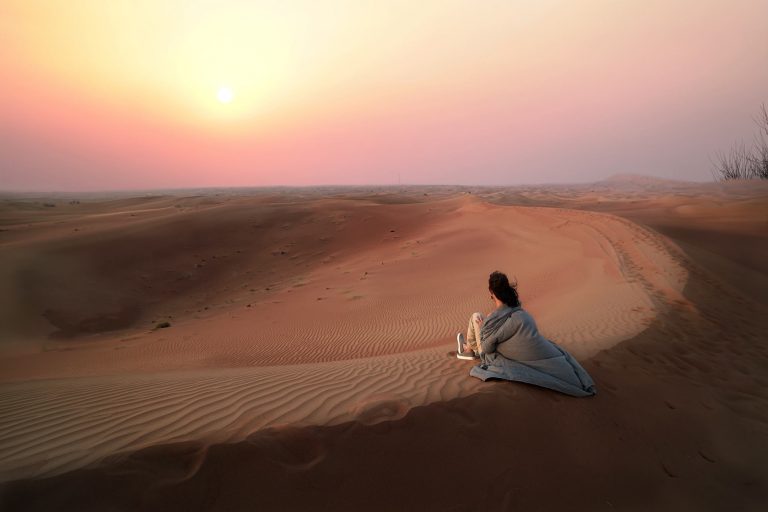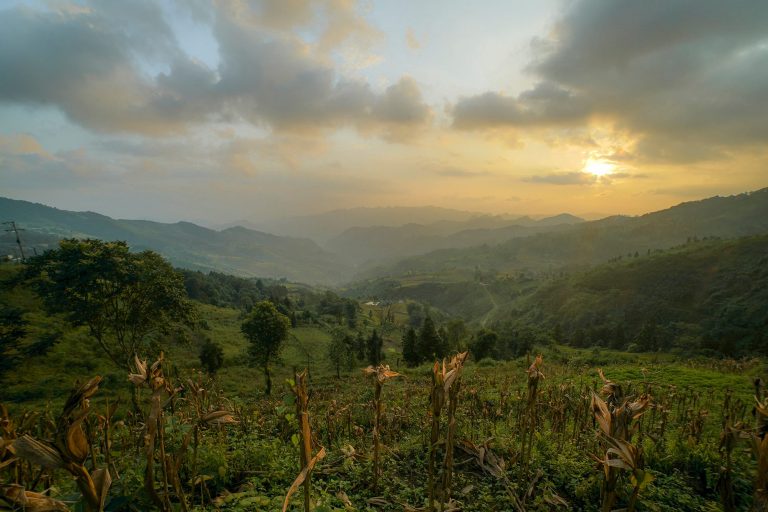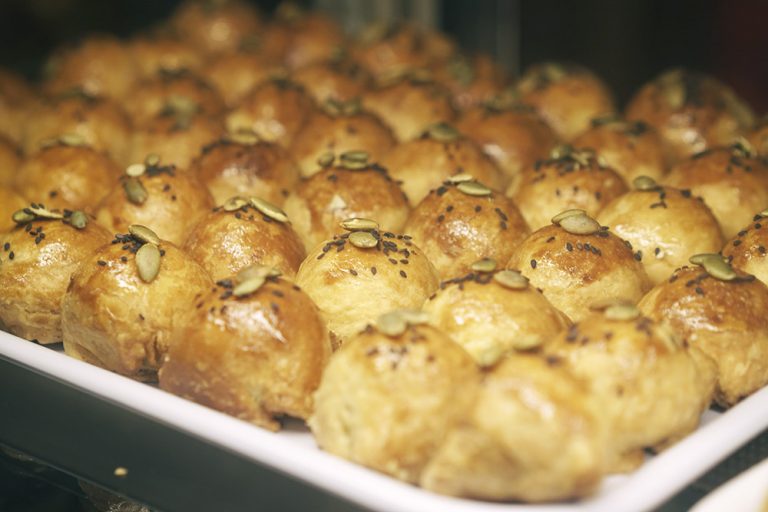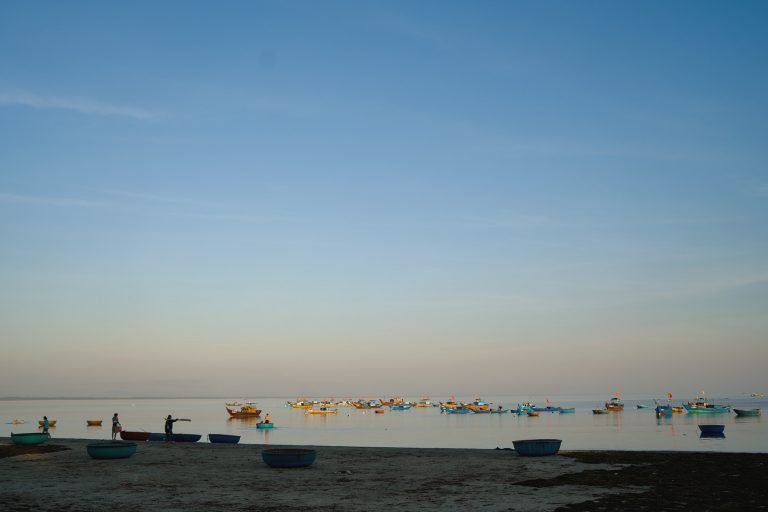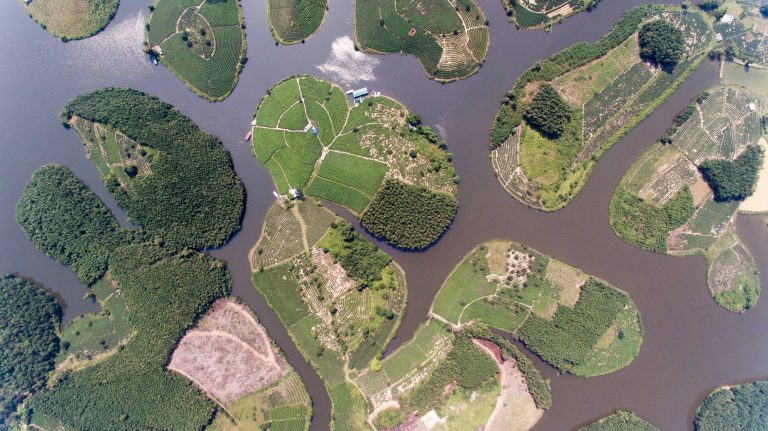Indigo – The colour that changed the world
INDIGO REFERS TO A SHADE OF BLUE, MORE SPECIFICALLY A COLOR LIVING BETWEEN BLUE AND VIOLET. IT REPRESENTS ENDLESS DREAMS AND UNWAVERING BELIEFS. BESIDES, A BLUE STRIPE AND A VIOLET ONE ARE FAR APART ON THE COLOR PALETTE, WHICH IS OFTEN COMPARED TO THE SUSTAINABLE DEVELOPMENT OF EACH INDUSTRY. DREAMERS WILL FIND SUSTAINABILITY A NOBLE GOAL THAT IS IDEAL TO PURSUE. MEANWHILE, SUSTAINABILITY, ACCORDING TO REALISTS, IS DIFFICULT TO ACHIEVE. FORTUNATELY, THESE TWO COLORS CAN BE MIXED PERFECTLY TOGETHER BY AN INDIGO DYER WHO KEEPS THE SUSTAINABILITY DREAM ALIVE WITH HIS HANDS AND BRAIN.
TOUCH THE INDIGO, TOUCH THE DREAM
Many years ago, during a long trip around Lao Cai, I met Phuong – an acquaintance who was living in a small house in Cat Cat village, Sapa with H’mong friends. The house was simple with mud walls and its living conditions from the bedroom, kitchen to bathroom were somewhat limited. I was wondering what made a Saigon girl feel attached to this poor mountainous region.
I couldn’t help but ask her and figured out that Phuong became acquainted with Sapa thanks to a volunteer trip to teach English to children in highland areas. She was quite passionate about fashion, but 10-12 years ago, the word “fashion” tended to be associated with frivolous images. Back then, simple loose-fitting dresses made of rough fabric were not popular. In her younger days, she always felt lost. Hence, as soon as she graduated from University with a major in English, she immediately packed her bags and set out to find her own world.
One day, Phuong was invited to a H’mong student’s home, saw the indigo box, and was stunned by the magic color. While they were playing together, the little student told Phuong to wait for a while because it was time for her to help her grandma dye scarves, which piqued Phuong’s curiosity. Then, Phuong followed her to the yard where the indigo barrel was peacefully lying. Here, everyone, including children and adults, knows how to dye with indigo because the H’mong people consider it to be as ordinary as preparing vegetables, cleaning the house, or cooking rice. Clothes dyed dark blue from indigo leaves have long been a cultural feature of the H’mong. Traditionally, on New Year’s Eve, each person must have a new set of clothes. Therefore, they will plant indigo trees, harvest them, make condensed indigo essence, and ferment indigo in a large tank to dye their clothes.
Phuong still vividly remembers her feeling when she first saw the slow movements of her young student squeezing a long cloth over a wooden bar about 15 cm from the top of the indigo barrel and rotating her hands evenly so that the cloth was uniformly dipped into the mesmerizing indigo substance. “Never have I ever seen such a slow action which was that beautiful. I found the slow pace wonderful and realized that it was born for me!”, Phuong shared. For her, touching indigo means touching a dream. From that moment, Phuong began learning how to indigo dyeing techniques from the H’mong.
Later on, the indigo dream still follows Phuong back to Saigon. Still having a keen interest in her fashion, Phuong founded Saigon Indigo, a company that sells clothing, purses, duvet covers, and pillowcases dyed in indigo. Saigon Indigo’s customers come from all over the world. Particularly, a Western customer not only bought the product but also kindly sent encouraging words to the little girl, hoping that Phuong would never give up.
So far, in Vietnam, there are not many people who have the same passion as Phuong. Even among ethnic groups with a tradition of indigo dyeing such as the H’mong and Dao people, many people gradually eliminate this culture from their lives because indigo dyeing takes a lot of time and effort. Perhaps, to keep this indigo dream forever, we need more people like Phuong who embrace a strong love for this special color.
CRAFTMAN KENJI TANAKA
Through Phuong, I got to know about a Japanese craftsman – Kenji Tanaka. He initially worked as a graphic designer in Tokyo, but after figuring out indigo dyeing, he gave up everything and moved to the foothills of Yatsugatake Mountain. I see the common things between people who are fascinated by indigo. They seem to find a deep connection within their genes and are ready to engage in an art requiring a lot of patience and meticulous refinement throughout their lives. Tanaka has devoted himself to indigo for 40 years and contributed many creative indigo dyeing works. Recently, from March 8 to 13, 2024, the exhibition “Soul Travel Exhibition” took place at the O Museum, Osaka to commemorate the talented artisan Tanaka, attracting more than 800 attendees from many countries.
According to documents, indigo is humans’ oldest dye. It is believed to have been used as early as 2500 B.C. in many parts of the world, including Africa, India, and China. It was introduced to Japan from China during the Asuka period (late 6th century to 710 AD) as a kind of herbal detoxifier and fever reducer. In Japan, during the Kamakura period (1185-1333), black indigo was the samurai’s favorite and considered as the victorious color because it symbolized victory inbattles. Later, in the Edo period (1603-1868), cotton became the dominant material and indigo was widely used to dye clothes.
However, with the invention of synthetic indigo dye in Germany in the 19th century and the aging of raw material producers and indigo dyers, traditional indigo dyeing began to decline. Currently, there are only about 30 companies in Japan using traditional indigo dyeing methods like Mr. Tanaka. In 2015, Buaisou was established in Tokushima, the most famous indigo farming land in Japan, with the motto “From farm to wardrobe”. All stages are carried out at the farm: from growing indigo, fermenting indigo, dyeing, and designing to the final products. In 2018, Buaisou was able to realize his dream of making indigo-dyed jeans. In the future, it is promising that there will be many indigo dyeing products with high applicability for modern life. Also, there are exhibitions and courses held regularly to preserve and develop traditional indigo dyeing. Tanaka’s indigo world was made solemnly with a sincere desire to pass this on to the next generation, wasn’t it? Now, from far away, Mr. Tanaka is probably smiling.
The work “Okkochi Shibori” was created by Mr. Tanaka in August last year. This work has been dyed 6 times in increasing levels, 4 times for each work, for a total of 96 times. It creates a beauty that gives viewers goosebumps as if they are travelling through layers of space and time. Each work impresses not only with its dyeing technique but also with the layers of meaning hidden under the simple image. He tends to use simple images such as the moon, sun, circle, square, triangle, etc. placed in a tight but free composition, creating a feeling of both reality and surrealism. The work “Lotus” means that even though the roots are in the mud, beautiful flowers still bloom on the water. Besides, for Tanaka, the lotus flower means “earth”. He chose the lotus flower as it reminded him of the indigo tree in his teacher’s words: “The natural indigo tree is also beautiful even when it withers”.
INDIGO WORLD MAP
Phuong showed me the book “Indigo – the colour that changed the world” (the title I borrowed to use for this article). According to the research of Thames & Hudson, there are hundreds of natural dye plants that can be extracted to make blue dyes. Woad thrives in temperate climates while Indigofera is best adapted to tropical regions. Besides, Indigofera, the indigo plant, can be found in Africa, India, Southeast Asia, and Central America. Additionally, there are numerous techniques used to create patterns during the dyeing process. One such technique is shibori, which involves intricate stitches and dextrous ways of folding before dyeing. When inexperienced dyers meticulously tie the fabric, they may not be able to foresee the final design. Hence, as the process finishes, they will be beyond amazed by the result, which is also the most interesting part.
The indigo dyeing technique my friend acquired from the H’mong people in Sapa closely resembles the practices of other indigenous mountain communities across several Asian countries. The process involves converting the colorless indigo pigment into a soluble, colored form through fermentation in an alkaline environment. The fermentation process produces a range of enzymes from diverse microorganisms, expediting the transformation of colorless indigo molecules into the desired colored form. After purification and pH stabilization, fabric is immersed in the dye solution. The color molecules temporarily adhere to the fabric surface and precipitate more effectively upon exposure to oxygen. The resulting indigo hue depends on the number of dyeing cycles, with H’mong women traditionally dyeing fabric multiple times to achieve a rich deep blue or violet- black shade. When utilizing this technique, indigo dyers rely on their expertise. Each dyer has their own formula, using different ingredients like lime, a small amount of sodium carbonate, rice wine, sake, molasses, or starch.
Many other places around the world have researched and implemented different methods. In the former French colonies, the blue pigment obtained from the fermentation process of indigo is compressed into squares and blocks or transformed into a lightweight powder for easy storage and transportation. Similarly, minority communities in southern China employ the same extraction process, but they prefer to preserve the dye in a moist state by sealing it in buckets or jars. In Japan, indigo leaves are finely crushed and fermented to form a dry and lightweight substance (sukumo) which is then stored in large bundles. Those who have extensively explored and written about the world of indigo pose fascinating questions: Who could have imagined that within the fibers of certain green leaves lies the deepest and most mysterious shade of blue? How is it that a Chinese dyer, a Mexican weaver, and a female dyer in Mali – who lived thousands of miles apart – discovered their own methods to extract dyes from local plants and successfully fix the vibrant colors in their fabrics? It’s truly awe-inspiring, isn’t it?
During my visit to Chiang Mai, Thailand in 2015, a local resident took me to the local handicraft villages. I was truly impressed by their well- organized structure offering skilled artisans opportunities to earn a fortune through tourism. When returning a few years later, I stumbled upon a stall selling handmade indigo-dyed products at the Cha Tu Chak market. The vendor explained to me that they still can sell their products since the handcrafted items are highly valued. Thousands of travelers flock to Thailand every year and they are willing to pay more for artistic products as it’s worth every penny.
Recently, I have been to SlowStitch Studio (Thailand), which was established by Kanchalee “Ann” Ngamdamronk and Sergey Tishkin. They met each other in Japan where they both completed a specialized hand-dyeing textile course. Moreover, they provide a great working environment with good incentives for local artisans, allowing them to unleash their creativity and produce a wide range of products for both domestic and international markets. On the other side of the world, Suzanne Connors founded Aya Fiber Studio 13 years ago as a dedicated dyeing workshop equipped with all the necessary tools. Its primary purpose is to educate local residents and tourists about traditional Japanese textile crafts and various fiber art forms. This is achieved through in-person and remote classes taught by experienced dye artists.
THE WORLD OF SUSTAINABILITY
Can indigo change the world? The answer is “absolutely yes”. In fact, indigo has changed our world by establishing a sustainable connection. When one catches sight of the indigo hue emanating from a far-off corner of the globe, indigo-dyeing enthusiasts will know where they truly belong. The indigo world map is filled with numerous other blue markers. After all, sustainability involves a journey of discovering and preserving original values, ensuring they remain steadfast and undiminished. The world of indigo, as perceived through the eyes of my little friend, is a realm where everyone and everything can fly together. Those who pursue the art of indigo dyeing are dreamers, opting for a slower, more romantic lifestyle that distinguishes them from the majority. Yet, their dreams originate from the indigo plant that sprouts from the earth. To reach great heights, their hands must be firmly grounded in reality. Sustainable development cannot be detached from its origins and culture.
Travellive Magazine April/2024
Photo: Saigon Indigo, Slowstich Studio, Buaisou, Kenji Tanaka

